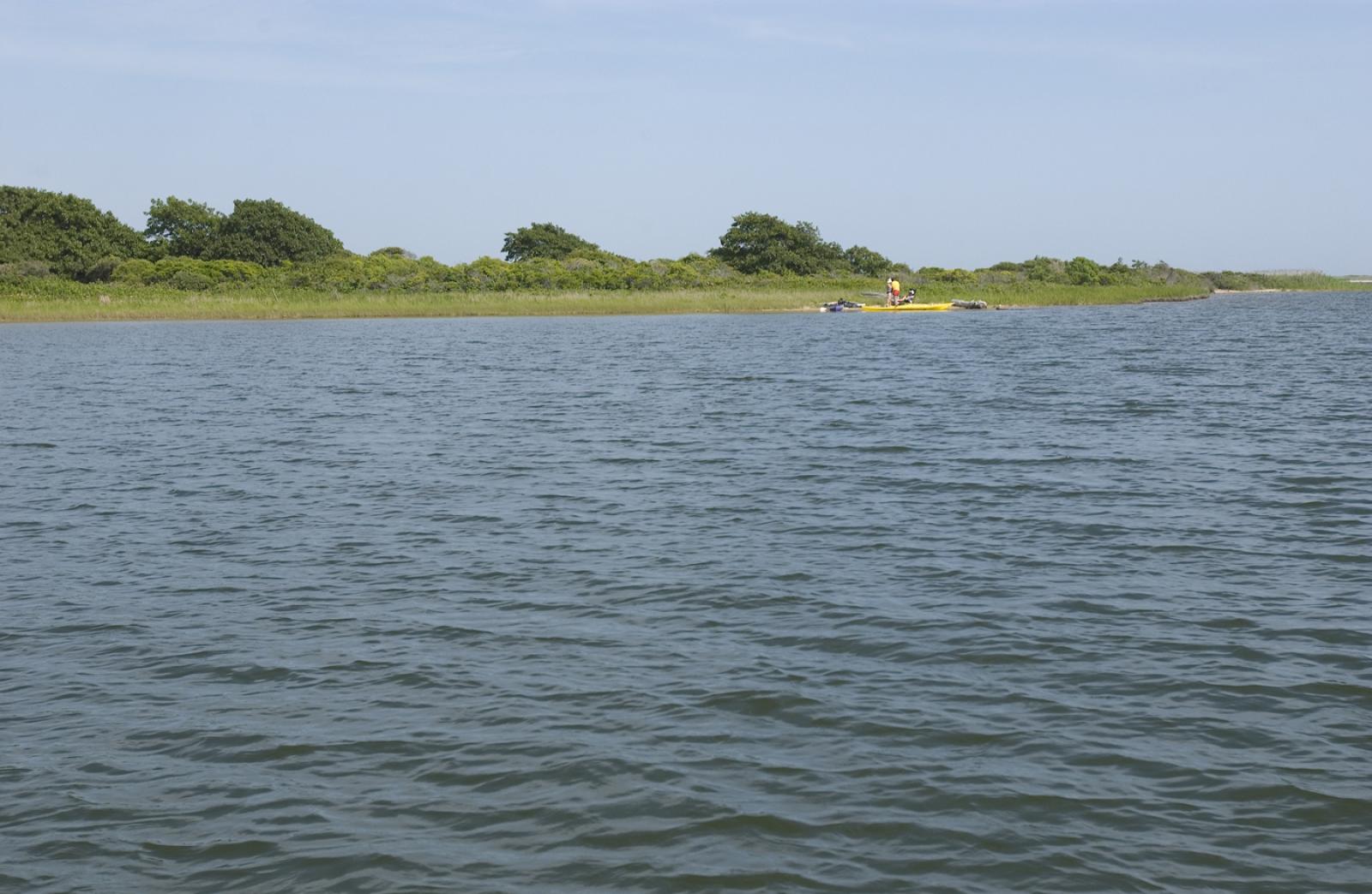Last summer the Vineyard Conservation Society succeeded in convincing Islanders that their ponds were indeed in peril. At this year’s Ponds in Peril forum, Islanders learned what they could do about it.
Speaking at the Sailing Camp Park overlooking the Lagoon Pond (an imperiled one itself), Michael Giggey, a principal with the environmental engineering firm Wright-Pierce, began by restating the bleak state of affairs: 71 per cent of the Vineyard lies in nitrogen-sensitive watersheds, and the Island currently generates 2.7 million gallons of wastewater a day, 295,000 of which is collected and treated. However, in order to maintain healthy coastal ponds the Island would have to collect and treat nearly a million gallons of wastewater. Add to that the pressing issue of future growth and development on the Vineyard — the Martha’s Vineyard Commission estimates a future 55 per cent increase in wastewater — and the problem seems nearly insurmountable.
The biggest culprit, according to Mr. Giggey, is the Title 5 septic system, the cheapest, lowest maintenance and most widespread form of waste management on the Island. While the system removes some nitrogen, the rest leaches into the soil where it can contaminate aquifers in the form of nitrates and, perhaps more importantly to the Island economy, saturate ponds and derail sensitive marine ecosystems. Nitrogen is a nutrient for plant life, but in this case it can be too much of a good thing. When nitrogen floods Island ponds it feeds runaway algae blooms that use up all available oxygen, choking other marine life and leaving thick unsightly mats of green sludge, the kind easily retrievable from Edgartown Great Pond. It’s a process known as eutrophication.
Nationally, eutrophication from agricultural fertilizer runoff has left massive marine dead zones in the Gulf of Mexico and Chesapeake Bay, but locally it has led to a dramatic drop-off in sunlight-dependent eelgrass in Tashmoo, Lagoon Pond, Sengekontacket and around the Island. As eelgrass has vanished, shellfish stocks have declined and water quality has worsened.
“The ideal Islandwide solution for wastewater management is to have as many homes as possible continue to rely on those types of Title 5 systems,” Mr. Giggey concluded, somewhat surprisingly.
Instead of calling for the eradication of Title 5 septic systems, as one might expect from the representative of a firm that specializes in engineering sewers, Mr. Giggey contended that the most cost-effective solution will include the more basic systems where possible and target problem areas with a variety of more expensive technologies. He also advocated a regional rather than town-by-town approach to the problem, especially in regards to waterways such as Sengekontacket or Lagoon Pond which span more than one town.
In presenting two case studies his group undertook, Mr. Giggey demonstrated that by connecting Sengekontacket properties to the Oak Bluffs sewer system, a 50 per cent reduction in problematic nitrogen from Sengekontacket Pond would be achieved. On the Edgartown side of the pond, by connecting the Ocean Heights residential area to sewers, 150 per cent of the problem would be alleviated, which is to say current nitrogen removal needs would be fully met as well as allowing for a 50 per cent growth.
And while large-scale sewage treatment facilities dramatically reduce the amount of nitrogen seeping into waterways, for some areas they are simply unfeasible. As properties lie further from sewer lines, the cost of connecting them becomes impractical and for these areas Mr. Giggey endorsed smaller cluster or satellite systems as well as individual nitrogen-removing septic systems.
But the price tag for dealing effectively with the Island’s current nitrogen removal needs, much less its future ones, is high. Mr. Giggey estimates $30,000 to $60,000 per property, or nearly $200 million overall, a figure which drew grumbles in the audience.
He agreed that the number was high but said in towns like Barnstable, which have tried to tackle nitrogen removal, the cost was spread over the entire town instead of targeting individual homeowners in the most sensitive areas, as everyone benefits from clean and productive waterways.
“The costs are scary though,” he said.
Mr. Giggey also admitted the adverse side effects of expanding sewer systems.
“Sewers can sometimes unleash demand that doesn’t already exist,” he said, illustrating the point with a slide show of formerly quaint Orleans, where buildings had popped up on formerly unbuildable lots thanks to a sewer expansion. But such problems can be addressed through regulations, he said, and he encouraged town leaders not only to keep new development in check on the Island but also try to limit what is known as redevelopment (i.e. a defunct antique store giving way to a 200-seat restaurant).
Finally, Mr. Giggey pointed out that industrial projects do not have a monopoly on addressing the problem. He said nature has already provided excellent nitrogen removers in shellfish, which filter dozens of gallons a day, and he pushed for more aquaculture, especially in places like Chilmark whose ponds have been affected not by too many septic systems but from the atmospheric deposition of power plants in Ohio — in other words, acid rain.
And finally, he agreed with the sentiment he has seen affixed to the bumpers of some Island cars: “Martha’s Vineyard: Urine Trouble.”








Comments (2)
Comments
Comment policy »